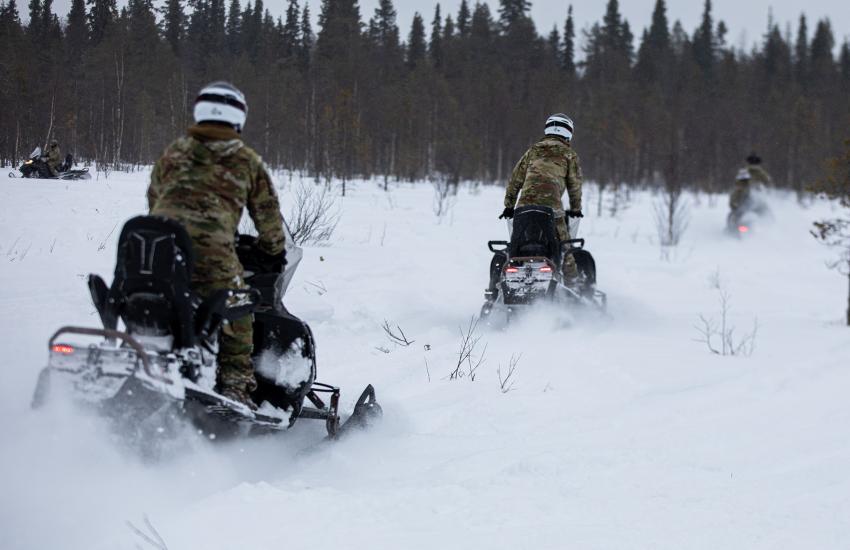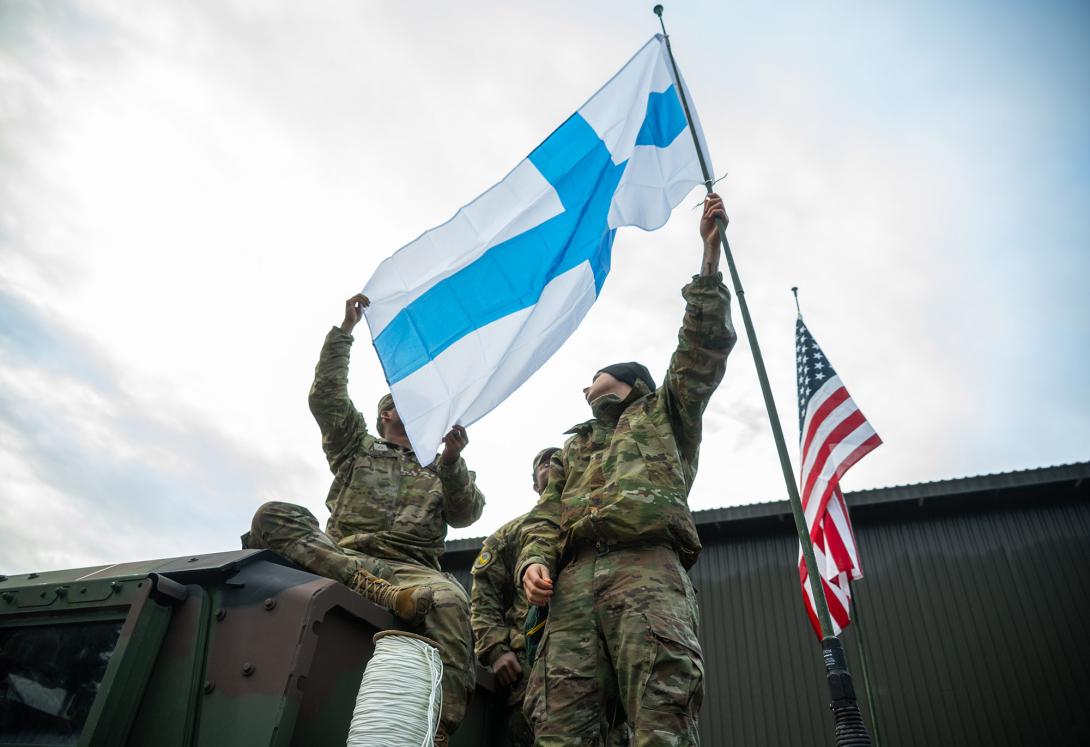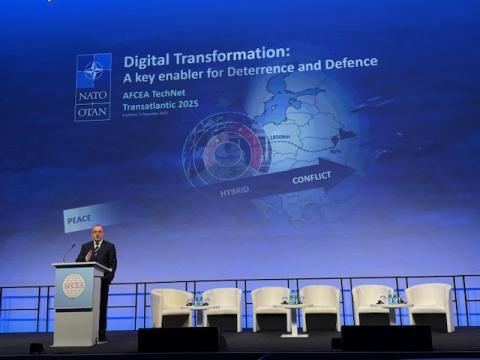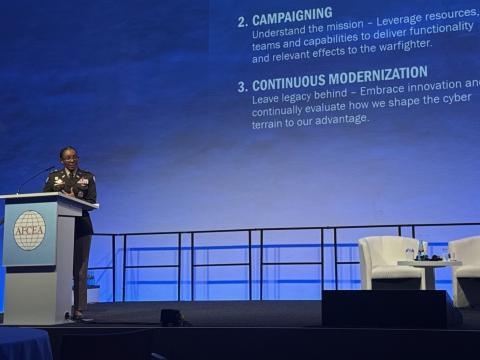Finland’s Borderland Europe Project To Test Multidomain Operations
Among NATO’s 32 member nations, Finland’s 832-mile border with Russia makes it one of the most strategic geolocations for border security capability testing. Following a series of workshops in May, the Nordic nation plans to host a multidomain technology testing event with industry, academia and government participants from allied nations in January 2026.
The vision, titled Borderland Europe, is a 24/7/365 concept, leveraging the vast physical space, challenging climates—and contested network environment—across the nation to test and advance existing technologies.
“Traditional border security border measures that we have in place ... they don’t work in modern warfare,” said Jarkko Surakka, founder and CEO of Epinova Oy, a small business consulting firm in Finland. Surakka indicates his passion and longtime service to his country have remained key enablers of projects such as this one.
What was supposed to be a short networking and technology demonstration opportunity in May quickly turned into a multiday event touring the borderland and igniting the initiative to expand even further to break barriers to entry for businesses and enhance emerging technology with allied cooperation.
The May workshops consisted of demonstrations by a handful of Finnish companies. One significant highlight Surakka mentioned was a joint demonstration by Nokia, Telia, Patria and ICEYE.
Attendees and participants from U.S. and Finnish businesses, academia and government were also present.
“Patria had an 8x8 armored vehicle as a platform,” he described. “There were Nokia cameras and sensors on board; ICEYE is a Finnish satellite company giving satellite images of the situation; and Patria also has one drone on the system. We drove that vehicle 100 miles away from Telia headquarters in Helsinki through a 5G network.”
The showcase was a true proof-of-concept that, as long as all is done correctly, the possibility of remote-controlled multidomain operations is more than possible, Surakka explained.
Paul Wertz, CEO of SherpaWerx, also attended the event. “Many companies in Finland are serious about helping Finland step up as a new member of NATO,” he told SIGNAL Media in an email. “Most Americans have little knowledge of Finland, but these companies are quite often designed for success with excellent engineering and focused on success in their targeted areas.”
The collaboration offered by the Borderland Europe project is aimed at addressing the gaps not addressed by the services, Wertz stated. “We are looking at pushing new technologies to the edge in extreme weather and battlefield use in a hostile environment,” he said.
While offering an opportunity for Finnish companies to showcase their offerings, the May event also stressed Finland’s geographic potential for further exercises. For Georgia Tech Research Institute’s (GTRI’s) Jeff Evans, Finland’s Borderland Europe project is a crucial partnership for the sustainment of testing capabilities.
GTRI is the applied research arm of Georgia Institute of Technology. With approximately 3,000 staff, 2,000 of whom are engineers and scientists, 90% of GTRI’s research is typically in support of the Department of Defense. In his 38th year with GTRI, Evans serves as a principal research engineer.
During a 2024 visit from some of Finland’s small companies, Surakka met with Evans to discuss ways to address border security and disaster response. “We want to put together a borderland security program where we have 24/7/365 capability to run technology events where we’re stressing the technology,” Surakka shared with Evans. “How does it integrate? How capable is it?”
Testing in Arctic conditions is an advantage, Evans noted, saying that cold weather poses significant challenges to many systems. The meeting led to the inception of May’s workshops, which GTRI staff helped lead.
“In my case, what are the sustaining communications requirements? What would you deploy if you wanted to integrate unattended ground sensors with [unmanned aerial vehicles] and the communication capabilities across that,” Evans asked. “How do you get that back to a command post or to somewhere else, either over satellite or over some other type of network that would provide you with actionable information? How do you integrate all that information together into an analytical, decision-making package?”
The project will likely also examine ways to ensure border security with unattended ground sensors communicating with UAVs and overhead satellites, Evans mentioned. Another program could focus on operational energy, which will explore the possibility of recharging UAVs mid-air. Such capability is commonly referred to as power beaming.
“Battery development for UAVs is evolving rapidly. Applied research efforts are showing that by deploying a specific type of battery in the UAV, and then targeting it with a specific laser, could rapidly recharge the battery while in flight,” Evans explained, noting the need for further testing for more precise details.
The idea is much like aircraft aerial refueling, Evans mentioned. Instead, a small swarm of UAVs could be recharged, with fully developed future potential for power beaming. “The question is, how do batteries perform in Arctic conditions? There’s a tremendous amount of interest in cold-weather operations,” he said.
Finland’s Borderland Europe is therefore an opportunity to test and demonstrate existing and emerging technologies and rapidly assess what modifications and upgrades are required.
The collaboration has also drawn the attention of a number of potential collaborators. “Countries and industry are incredibly aware of the compelling problems and requirements,” Evans told SIGNAL Media.
“Anything that we were to do in integration of drones, sensors or that type of experimentation would feed their interest because of their requirements.” Testing capabilities in areas largely vulnerable to GPS jamming is an advantage and proof of concept for the command, Surakka added.
Other nations such as the United Kingdom and Australia have also shown interest in the project.

What the Borderland Europe initiative ultimately comes down to is essential situational awareness. With vast amounts of data collected and shared, artificial intelligence (AI) and quantum computing may be necessary to filter information.
“You can’t just display everything that comes from those thousands and thousands of drones or sensors,” Surakka explained. “Let’s say a camera sees something that wasn’t there yesterday, and it’s very difficult terrain because there are lots of trees and the environment keeps changing over the seasons ... so how do we make sense of all of that data? It very quickly becomes a computational problem.”
While the Borderland Europe initiative is headquartered in Joensuu, which is approximately 264 miles away from the Russian border, Surakka’s team plans on leveraging labs and available areas all across Finland.
For example, the Finnish Defence Forces use several square miles of land for testing 120 days out of a year. The land remains vacant for the rest of the year, leaving an open door for testing by local businesses and international allies.
Other physical spaces within academic institutions are also available, Surakka said. “We’ll utilize all the already existing infrastructure around us because Finland is a dual-use country in many ways, all of our citizens are reservists in the military, so military bases are here and there,” he said. “We use our highway strips as airfields if necessary and we practice that every couple of months.”
Though having a physical building is noted for a future project, Surakka’s main goal at the moment is ensuring collaboration among all stakeholders as the January 2026 event approaches. The plan is to showcase about 30 companies from Finland, the United States and allied nations, with 100-200 attendees. If successful, there is potential for it to become an annual event.
“In our vision, by 2030, we’ll have a concept of Borderland Europe up and running, in full gear, producing the best capability of border security and sharing that with our allied nations,” Surakka said.
And while current conflicts continuously highlight the importance of such initiatives, Surakka stressed that seeing is believing. “When you actually go to a country and city which is the eastern point of the NATO border, your point of view changes ... we can’t overlook it here,” he said.
Displaying a true embodiment of ‘sisu,’ a popular Finnish concept signifying resilience in the face of adversity, Surakka concluded by sharing what this project means to him.
As a Finnish Air Force officer and reservist, Surakka is regularly deployed to receive briefings on Finnish airspace operations. Adversarial GPS jamming is a constant reality, he said.
“My family lives less than 100 miles from the border, and so Finland is a frontline country. We’re not panicking about it, but we don’t have a luxury to just wait for other people to solve our problems and it’s not in our character either. We want to take action because the history of our country has taught us that it’s better to be safe than sorry.”





Comments